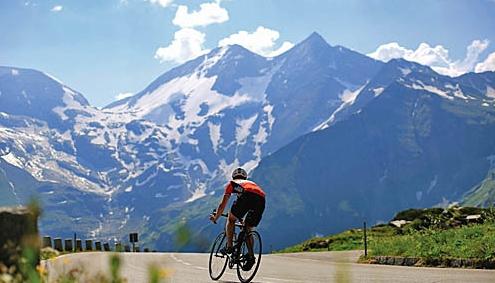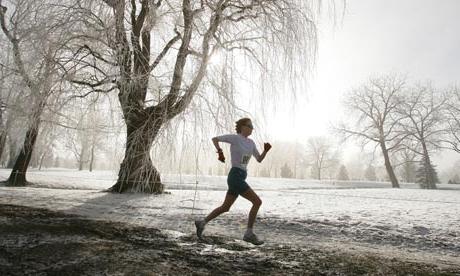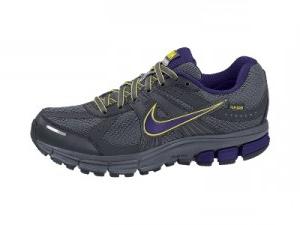Running technique is the basis of victories and the joy of healthy legs
Let's start with the tracks. Now it is often possible to see athletes running along city streets or on the highway. Their efforts are welcome, but, unfortunately, running on asphalt or on concrete for the feet is not very good. Even if the running technique of a person is good, putting a foot on the support is a blow. Its consequences sooner or later will necessarily affect the condition of the foot and shinbone tibia. That is why the jogging tracks in the stadiums are made of materials that are softer than asphalt. Therefore, if there is an opportunity, it is better to choose for the run not the highway, but an earthen path in the park.
There are several kinds of running. The most popular is a jog, which is used not only by amateur athletes who run for their own pleasure only, but also all professionals. The technique of jogging is pretty simple. Hands should be bent at the elbows and move synchronously with their feet. The amplitude of the swing of the upper limbs is small at the time of jogging. Sometimes you can see how the athletes during the run make the movement with their hands, as if they are sowing something in front of themselves. This is completely wrong, because it reduces speed and prevents proper movement of the legs. Also it is impossible, even with slow running, to swing the body from side to side. The length of the steps depends on the height of the person and the length of his legs, but in all cases it is small. The force of repelling the supporting leg from the track is not great. The swinging foot, that is, the one that is brought forward, must be placed gently, without sticking into the path. Then the sound of the steps while running will be quiet. And, of course, it's impossible to talk even when running unhurried, as the respiration rate is lost.
Normal running is built on the same principles. Hands must help the movement, and not interfere. It is difficult to precisely measure the angle and magnitude of the amplitude for a running person, so we will not give these figures. We only note that they must move more back and forth than left to right. With a steady run, their movements are uniform, with the sprint the amplitude increases. The runner seems to push his hands away from the air, thereby helping his feet to increase speed. When running for long distances, tension accumulates in your hands. Therefore, it is recommended from time to time for a few seconds to lower them and shake them off.
The technique of running at any distance directly dependsfrom the training of the feet, especially the foot, and from the flexibility of the ligaments. The foot of the runners should be very strong, because with the right run it has the lion's share of the load. The foot of the foot must be lowered onto the path only on the foot and not on the whole foot. So, firstly, the push increases, and, consequently, the speed, and secondly, the muscles and bones of the foot do not get injured. Therefore, the foot needs to be trained, or, as the athletes say, swing. This is achieved by a series of exercises. The easiest way is to perform body lifts alternately on the foot of the right and left legs.
Beautiful correct running technique is observedwhen the athlete, making movements with a treadmill, high raises her in the knee, straightens and gently puts on the path. The pitch is longer and the speed is higher. To learn how to run, you need to have a good press. This is also helped by an exercise consisting in slow (almost trampling on the spot) moving forward, but at the same time lifting the knees high. Help here can another person, setting ahead of the athlete at a certain height, their palms. The performer of the exercise should kick his knees every time in the palms of his hands.
It is also very important for a good runnerits ligaments are elastic. If they are not highly trained, the athlete can not swing his foot with sufficient amplitude, which means that his speed will be low.
The technique of running for short distances hassome features that allow you to win in speed. When an athlete runs 100 or 200 meters, he has almost no time to disperse. Once on the pads, do not need to tilt your head. It is more correct to keep it slightly raised. The pelvis in the "to start" position can not be raised very much, nor can it be significantly lowered. With the word "attention", the pelvis is slightly raised, the athlete at this moment should be similar to a compressed spring, ready at any time with a force to straighten out. Complete straightening of the body when lifting from the pads is best done at 3-4 steps. In the foot movements, you need to put all the efforts, because the distance is short and such a strained for the muscles mode will last only a few seconds. The jogging leg should push with the greatest possible force from the track, the flywheel to do a wide swing forward, quickly put on the support and in the next instant it becomes jogging. The movements of the hands should maximally help the feet to increase the speed, for which to make synchronous flaps of wide amplitude, and in no case across the body.
The technique of running for long distances is built onthe ability of the leg muscles and the body as a whole to withstand a prolonged load. On a long distance there is room for dispersal, and for the finish, so the athlete must be able to correctly distribute his forces. A quick start is needed in order to take a more advantageous place among rivals in the race. Finish on long distances usually begins meters for 100-120, at the exit of the last turn. Here in a more favorable position will be the athlete, who is in the top three and is located on the first track. Those who are on the other tracks, on the bends will have to take extra steps. For the same reason, to overtake rivals should go only on direct sites.








